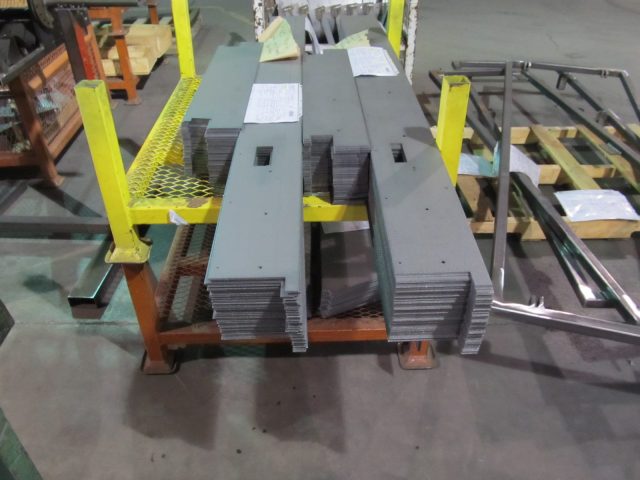Sheet metal punching is an exceptionally common metal fabrication process used in the manufacturing of countless goods. The process is a relatively straightforward one. A punching press machine punches designs through metal sheets as the material passes through or under the press. Where sheet metal punching was done entirely with manually operated machines, today’s punching processes are accomplished with advanced computer automated machines programmed with matrices of standard or specially designed shapes.
How is Sheet Metal Formed?
Sheet metal is formed by an industrial process that presses metal into thin, flat uniform workpieces. The machines used to punch the metal sheets are tooled with a punch and die that cut and form the workpiece. Industrial punching techniques apply a compression force to exert pressure into the desired form onto the sheet. The process creates an initial deformation of the sheet metal material to be formed, followed rapidly by shear stress that fractures and cutouts the material to specification.
The process is initiated when sheet metal is set in place. A punch then passes downward through one side of the sheet metal and enters the die, located on the metal piece’s underside, leaving the desired shape to form in the metal workpiece as the remaining metal scrap, referred to as a slug, is separated from the new pattern. The die also provides the necessary support to allow the punch to apply maximum force without breaking the metal. The punch and die process creates accurate, error-free metal parts of any size or shape as designed.
Sheet Metal Punching and Automation
Where sheet metal punching was once operated entirely through manual processes, today’s advances in metal punching technologies allow manufacturers to perform automated punching techniques. Processes are accomplished with speed and precision to form intricate metal parts for multiple industrial sectors. Though small punch presses are still operated manually for specific jobs, custom production, or small runs (to meet product demand requirements), industrial sheet metal punching is achieved on automated punching machines operated by CNC (computer numerical control) programming.
CNC punching machines operate through automated mechanical processes by means of commands programmed into computer software. The program clamps the material in place and then shapes or forms custom, complex designs with precision. Machines can be fitted with multiple punch and die sets to be used simultaneously to form a part with just one stroke of the press. CNC programmed punching offers flexibility, versatility, efficiency, and complexity for manufacturers to meet the most challenging production requirements. It can produce many sheet metal forming processes, can produce intricate yet economical holes of varying shapes with precise duplication, and, as a result, is the most cost-effective method in forming metals in medium to high production runs.
Common Industries That Utilize Sheet Metal Punching
Sheet metal punching is used to create parts and components for various goods used in many industries. Automotive, agriculture, electronics, aerospace, energy, construction, architecture, and many other sectors rely on fabricated metal parts to build their products.
Sheet metal materials used in punching differ—aluminum, copper, stainless steel, titanium, brass, and other metals—and so do their properties, which can subsequently impact punch quality. Material subjected to repeated punching, especially those in a tight perforation, can cause varying material stress and heat build-up degrees. This may lead to slight distortion, such as stretching, deformation, and warping. Ways to reduce the effects of distortion vary, but begins with the use of sharp tooling.
Dull tooling requires more force, which creates stress that can result in increased distortion of the material. Sharp tools will improve punch performance and prolong tool life. Another way to limit distortion is to treat or coat punches. This will reduce heat build-up during high volume production runs.
Sheet Metal Punching is Cost-Effective and Offers Flexibility
Countless everyday objects are fabricated as a result of sheet metal punching. With today’s ever-increasing technological advancements, CNC programmed presses punch and rapidly and precisely cut the most challenging patterns. Versatile and flexible, it is one of the more fundamental and most cost-effective methods used in metalworking today.



